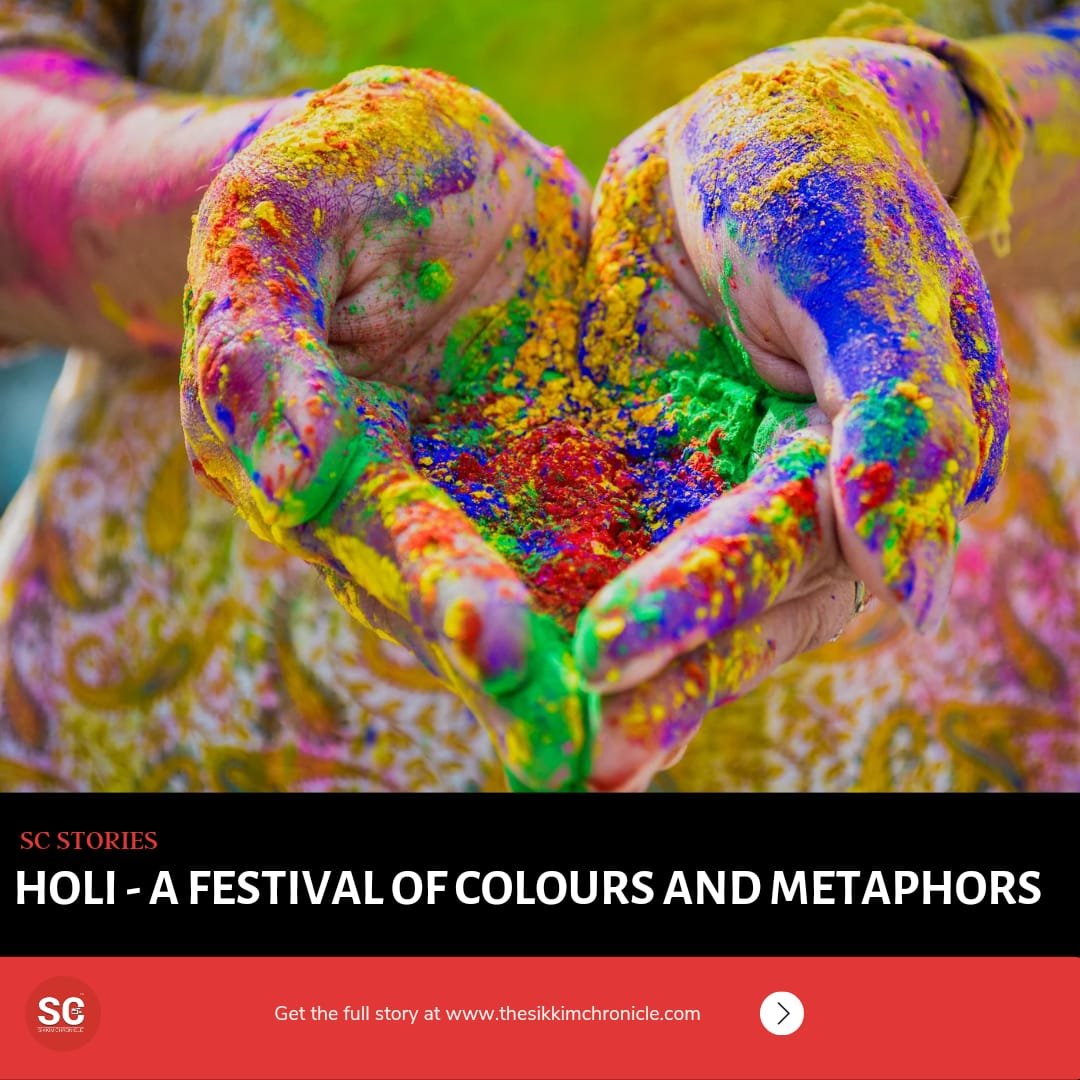Holi, also known as the festival of colours, celebrates the commencement of spring, end of winter, the victory of good over evil, and a new life, which is a metaphor for spring season.
Holi, as written in the Hindu texts (puranic scriptures), originates from the tale of Hiranyakashyap, an asura (demon) and a king of daityas (demons and monsters), who had special powers by performing penance for lord Brahma, and his son Prahlad, who was pious and a passionate follower of Lord Vishnu.
Hiranyakashyap hated Vishnu and asked for a boon from Lord Brahma so he could kill Vishnu, the hate stemmed from the fact that his brother Hiranyaksha was slain by Varaha, an avatar of Lord Vishnu. He was granted a boon where he was rendered invincible by any God, Demigod, Animal or Human, or against any and all forms of weapons and ashtras, he was given the boon that he couldn’t be killed either in the day or the night, either inside or outside, either on earth or in space, either with an animate object or inanimate object. This boon, added with Hiranyakashyap’s (his name etymologically translating to garbed in gold) nature of desire for wealth, power and supremacy over others made him even worse that he already was.
One day Hiranyakashyap, angered by his son’s devotion against the very being he despised decided to incinerate Prahlad with the help of his sister, Holika who had a boon that made her immune to fire. The demon father decided to kill his pious son, and in one of those attempts to kill his son, Hiranyakashyap had him sit on a burning pyre with his aunt Holika. Holika had a special boon that prevented her from being harmed by fire. On the pyre Prahlada chanted Vishnu’s name and in the battle of good against evil, Holika was burnt down but nothing happened to Prahlad. When aksed by his demon father, Prahlad recites how Lord Vishnu is everywhere and watches over him, angered by this Hiranyakashyap gets into a fit of rage, and while trying to prove Prahlad’s recitation saying that the Lord is in the pillars, Hiranyakashyap breaks those pillars with his mace, from one of which Narshimha, an avatar of Lord Vishnu appeared. Lord Vishnu appeared hered form of Narasimha, not to only save Prahlad but in order to be able to kill Hiranyakashyap without violating the boon given by Brahma. Since Hiranyakashyap couldn’t be killed by any Human, God, Demigod or Animal, but Narasimha being none of these, as he was a form of Vishnu (a God) incarnate as part human, part animal, appearing at twilight (when it is neither day nor night) on the threshold of a courtyard (neither indoors nor out), and putting Hiranyakashyap on his thighs (neither earth nor space) and using his nails (neither animate nor inanimate) as weapons, Narshimha disemboweled and killed the demon king.This victory of survival of Prahlad and the evident victory of faith and good over angst and evil is celebrated as Holi. It is also a methaphor of how faith and simplicity always get victory over desire, power, and adulterated supremacy of the ego.
Holi is a two-day spectacle of a festival, and is literally kindled on the evening of Purnima, or Full Moon; known as Chhoti Holi or Small Holi event, it is celebrated the evening prior to the main festival. The day prior to the main festival, on Chhoti Holi, Holika Dahan, a burning of pyre on Purnima night where people light bonfires and throw roasting grains, popcorn, coconuts, chickpeas etc., into the pyre, perform religious rituals in front of the bonfire, and pray that their internal evil be destroyed the way Holika was killed in the fire. The next morning is celebrated as Rangwali Holi (Dhuleti), a free-for-all festival of colours. This main festivity followed the next day where people of all ages smear colours, waterbombs, coloured water bombs, squirt guns, and all the ingenious ways of smearing colours to celebrate the festival, is also said that this mischievous act of smearing coloured waterbombs by Lord Krishna, an avatar of Lord Vishnu, onto his milkmaids.
The festival is revered all over the world and people from all around come to different places in India, if not celebrating outside of India, to witness the extravaganza of colours. Holi is often seen to also be related to intoxication through natural herbs, marijuana (male and female plants) that get turned into edibles and beverages called bhaang.
In Sikkim, the most spectacular place to be during this festival is at the Mahatma Gandhi Marg where almost every year Holi is celebrated with a grand manner where people of all religions, ethnicities, backgrounds and every other indicator humans have chalked up to differentiate between humans come together and celebrate together. However, in the wake of Covid-19 it is advised by various health sectors and governing bodies that people take precautionary measures, as last year Holi celebrations acted almost as a super-spreader event, the statistics and news reports show.
This festival of colours, literally a festival of celebration of good over evil, of abstinence over desire, of truth over lies, of penance over ego, of servitude over supremacy, as directly and metaphorically said by the vedas and puranas, shouldn’t be smeared in evil rather it should be celebrated with warm hearts and harmony, especially at a time when people have tried (and failed) to incite communal disharmony in the state of Sikkim. It is also advised by many NGOs, community workers, environmentalists and governing bodies that people pick up after themselves looking at the environment, and looking at the Sikkimese spirit of environmentally conscious decisions and also to be considerate towards animals who end up getting the wrong end of the stick.

